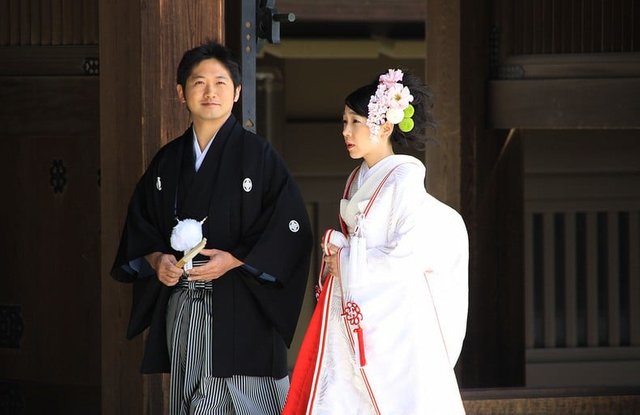Do you know the traditional Japanese clothes called Kimono?

Do you know the traditional Japanese clothes called Kimono In this article we will see a little about the famous traditional kimono dress, its parts and accessories, as well as some other similar outfits.
Japan retains an ancient culture , even with Westernization, Japanese fashion is different from all over the world. Fortunately, traditional clothes from previous centuries are still in fashion, as they are worn on many occasions.
Which country wears kimono as a traditional costume?
Although the article makes it clear that the kimono is a traditional Japanese dress, both Japan and other Asian countries have influenced each other throughout their history. Today it is possible to find such traditional clothes in both countries.
Of course, each country's traditional dress is very different, but it has similarities. In China we have hanbok and in Korea we have hanbok.
Traditional Chinese hanfu clothes have wide and large sleeves like a kimono, as well as some additional and elegant details, while the hanbok has thinner sleeves and a contrasting skirt.
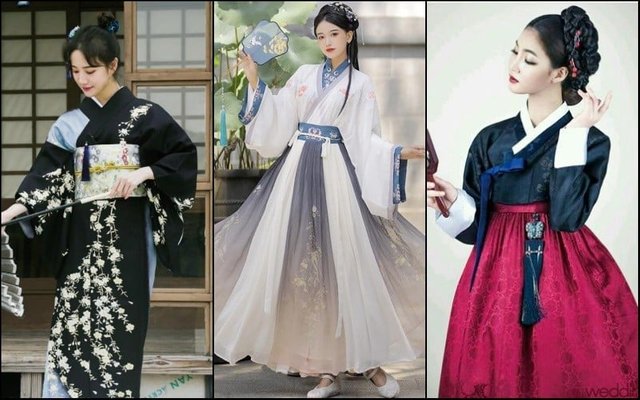
Something to wear-a kimono or a kimono?
The right one is a kimono or a kimono? What is the meaning? Let's start the article by answering these two small questions. Kimono is a Brazilian version of the word kimono. Both are true, but I prefer to write in the original way.
Its meaning is very simple and means something to wear. In the word Kimono, we have the ideographic clothing [着] and the thing [物]. It is a simple word that is currently used to refer to a certain type of traditional Japanese clothing.
Nowadays, it is common to associate kimonos with clothes used in fights such as judo, jiu-jitsu, etc. Despite having the same name, they are different outfits. In fact, the word was once used to refer to any kind of clothing or thing that can be worn.
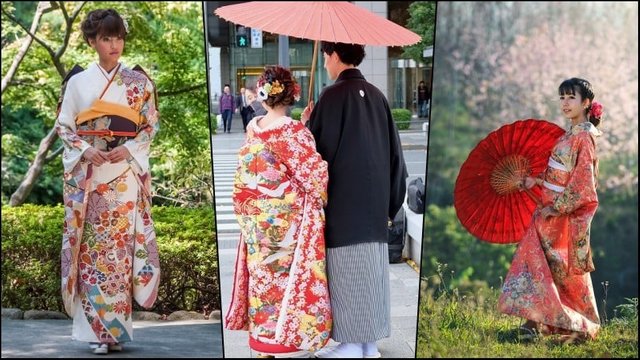
What is the origin of the kimono?
The kimono was created with the influence of the Chinese clothing "Han" or "hanfu" but has evolved over the centuries, becoming part of the traditional dress between the years 794 to the XIX century.
Over time, kimonos were replaced by Western clothes and yukata for greater convenience and ease of movement. Today, they are used more by women, and on special occasions. Kimono has a long history, it has undergone many changes over the Millennium.
In 1903 the first variation of clothing appeared, inspired by the openings of the traditional kimono. This variation was made by Paul Poiret and became popular in Europe. Soon other variations appeared, one of which was made by the Brazilian Nivea Freitas and became popular in 2016.
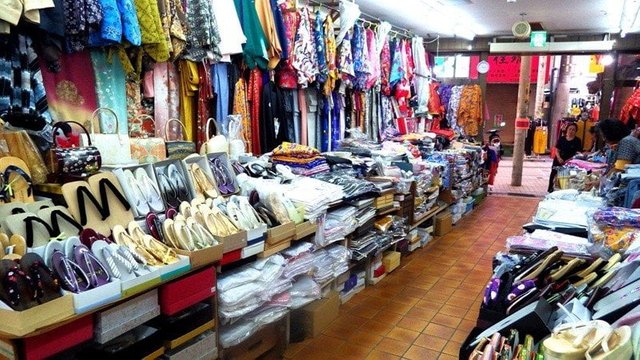
What are the parts of a kimono?
Before figuring out what pieces and accessories a kimono is made of, we need to know the parts of this wonderful piece.
Doura [胴裏] – top coat by women ؛
Eri [衿] - necklace؛
Fuki [袘] - hem guard
Sode [袖] - how far down the hole ؛
Obi [帯] - a belt used to fold excess fabric ؛
Maemigoro [前身頃] - the main part of the front, except for the sleeves ؛
Miyatsukuchi [身八つ口] - open under the sleeve
Okumi [衽] - inside the panel on the right and left front edge, except for the cover ؛
Sode [袖] - mango؛
SOdeguchi [袖口] - open sleeves
Sodetsuke [袖付] – digging.
Susomawashi [裾回し] - bottom lining
Tamoto [袂] - bag sleeves
Tomoeri [共衿] - [collar protector] collar length ؛
Uraeri [裏襟] - inner collar
Ushiromigoro [後身頃] - the main part is at the back, except for the sleeves ؛
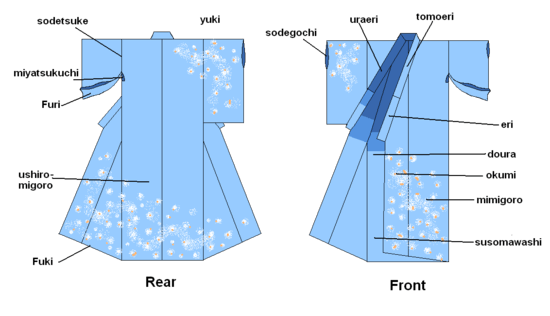
A different kind of kimono
Kimonos can vary greatly and change depending on age, season, occasion and many other factors. There is a whole etiquette behind the kimono and even the correct way to wear it. Now let's see some types of kimono.
Furisode [振 袖] is a long-sleeved (70 to 90 cm) swinging kimono. It is solemn and worn by unmarried girls, richly embossed, closed with an Obi in bright multi-colored brocade and tied with large bows at the back.
Single friends can wear a forsudi kimono at weddings. Young girls often use forsud at the coming-of-age ceremony (20 years old) called Seijin Shiki.
Kosode [ξ 小] is an expression derived from the custom that when a woman gets married she wears a kimono with short sleeves or with short sleeves as a symbol of fidelity to her husband, which gave rise to the Tomesode [小].
In general, a Tomesode-type kimono is used at weddings and is very solemn. They usually have 5 or 3 Kamon (shields) of the family printed and embroidered on the sleeves, chest and back.
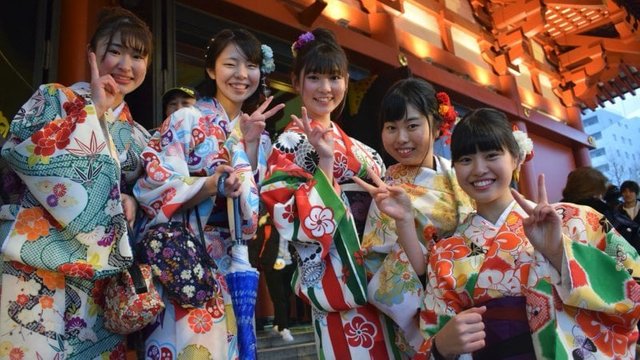
Tomesode is a short-sleeved kimono usually separated by the following:
kurotomesode [黒留袖] - black and painted
irotomesode [色留袖] - black and less formal ؛
The parents of the bride or groom usually use Kurotomesode, while the bride's relatives and friends usually use Irotomesode. Usually this type of kimono is dressed in brocade and gold OPI. The length of the sleeves is from 50 cm to 70 cm.
Homonji [訪問 着] - an ordinary kimono of one color, usually in pastel tones. This type does not have kamons (family Shields) and is considered less formal than Irotomesode, but it can be used at parties and wedding ceremonies.
Tsukesage [下 on げ] - a wonderful kimono worn by single or married women. They usually have a more discreet decoration and are less formal than Houmongi, and can be used daily on various occasions.
Eromoji [色無地] – a kimono of only one color, which can have a texture, but without decoration in another color, used mainly for tea ceremonies. It may have a small decorative embroidery or Kamon (Family Shield) on the back.
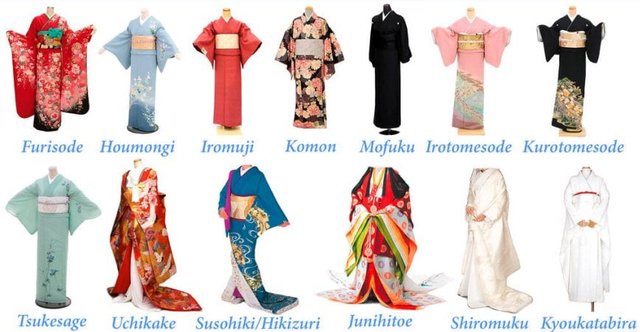
What is the difference between kimono and yukata?
Yukata is one of the most kimono-like items and is often confused with people who do not know their differences. One of the main differences is that the traditional kimono consists of several pieces, while the yukata is simpler and thinner.
Yukata is an informal and thin type of kimono, usually consisting of only one piece and a belt. It is often used after bathing in traditional ryokan and Onsen hotels. The word yukata literally means bathing suit.
Yukata [浴衣] is a popular Japanese summer dress. People usually wear yukata at Japanese festivals, fireworks festivals (Hanabi Taikai) and other traditional summer events.
To learn more about traditional Japanese summer clothes, we recommend that you read:
Yukata - Japanese clothes for the summer
Ryokan-charming Japanese inn
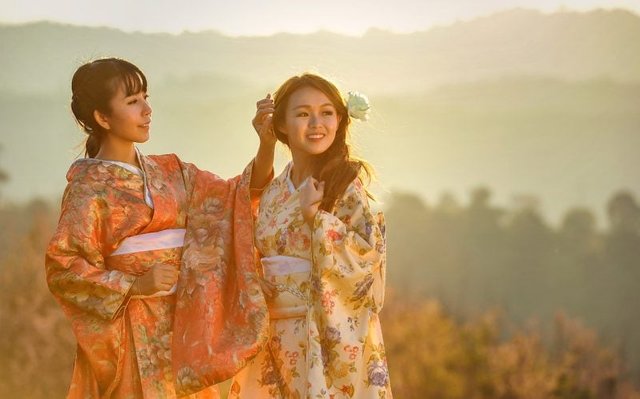
What are the parts and accessories of a kimono?
There are many other accessories and related clothing that were made just to be worn with kimonos. If you are not wearing some of the pieces that we will mention below, you cannot even say that you are wearing a kimono.
Obi [帯] - decorative wide belts wrapped around the waist of a kimono or yukata. Depending on the outfit, such an Obi may cost more than the "kimono" itself.
Irisugata [衿姿] - a fake collar that can be used with a kimono to simulate more layers؛
Haori [羽織] - types of coats that can be worn over a kimono on cold days. Happy [法 被] is a type of Haori used by shopkeepers, which is currently widely seen as a team uniform at festivals.
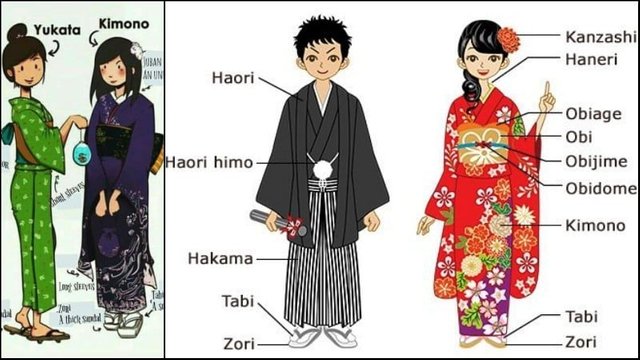
Koshihimo [腰紐] - a narrow strip used to help with dressing, most often made of silk or wool. They are used to hold almost any object in place during the dressing process, and they can be used in a variety of ways.
Nagaguban [長襦袢] - a cloak in the form of a kimono worn by men and women under a kimono. Because they are made of silk, they are delicate and difficult to clean.nagajoban helps keep the kimono clean by avoiding contact with the wearer's skin.
Zuri [草履] - a traditional slipper-like sandal, there are formal and informal Zuri, which is made of many materials, including fabric, leather, vinyl and can be decorated.
Geta [num駄] - wooden sandals worn by men and women with yukata؛
Waraji [草鞋] - straw sandals worn by monks؛
Women's kimono spare parts and accessories
Hyoko [ひよく] a kind of semi-kimono, historically worn by women under the kimono. Today they are worn only on solemn occasions such as weddings and other important social events.
Kanzashi [簪] - hair ornaments used by women. There are many different styles, including silk flowers, wooden combs and hairpins.
Juban [襦袢] and hadjuban [肌襦袢] - a fluffy dress resembling a jacket؛
Susoyoke [裾除け] - petticoat, feminine underwear؛
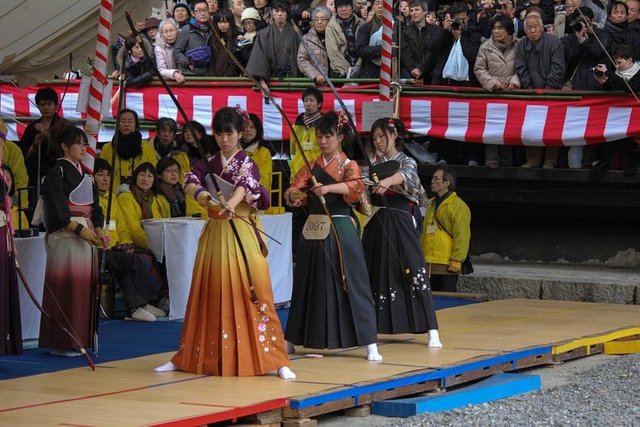
Men's kimono spare parts and accessories
Judging by [袴] - traditional Japanese clothes. It is usually worn over a kimono that covers the lower part of the body and resembles baggy trousers.Hakama is a traditional clothing for men.
It was originally used only by samurai men to protect their legs while riding a horse. On foot, Hakama hides her legs, which makes it difficult to predict movement, which gives her an advantage in combat.
Nowadays, Hakama is used only in very formal situations, such as tea ceremony, weddings and funerals. Attendees at Shinto temples and practitioners of some Japanese martial arts, such as Aikido, kenjutsu, Kendo and Kyudo also use the hakama style.
Fundoshi [褌] - traditional Japanese underwear [thong] for adult males, made of cotton؛
Netsuke [根付 OU 根付け] - consists of a worn ornament hanging on the Obi؛
Jittoku [十徳] the kind of nymph that only men wear؛
Jinbaori [陣羽織] - specially made to be worn by samurai؛
These were some curiosities about the kimono and its accessories. If you liked the article, don't forget to share it and leave your comments. Thank you very much and see you next time!
